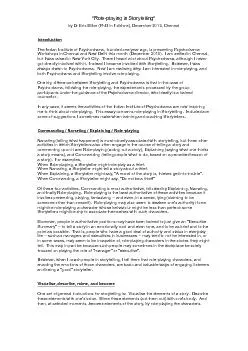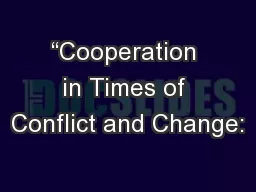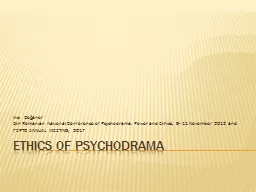PDF-One big difference between Storytelling and Psychodrama is that in the
Author : jane-oiler | Published Date : 2015-11-03
Explaining Role Explaining a Storyteller might say A moral of the story is thieves get into trouble When Commanding a ties Commanding is most authoritative followed
Presentation Embed Code
Download Presentation
Download Presentation The PPT/PDF document "One big difference between Storytelling ..." is the property of its rightful owner. Permission is granted to download and print the materials on this website for personal, non-commercial use only, and to display it on your personal computer provided you do not modify the materials and that you retain all copyright notices contained in the materials. By downloading content from our website, you accept the terms of this agreement.
One big difference between Storytelling and Psychodrama is that in the: Transcript
Download Rules Of Document
"One big difference between Storytelling and Psychodrama is that in the"The content belongs to its owner. You may download and print it for personal use, without modification, and keep all copyright notices. By downloading, you agree to these terms.
Related Documents














